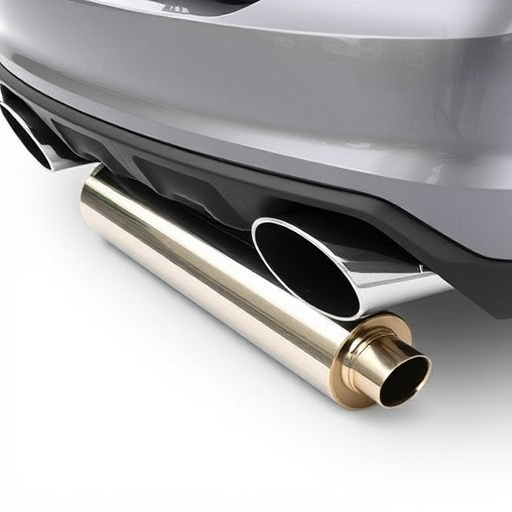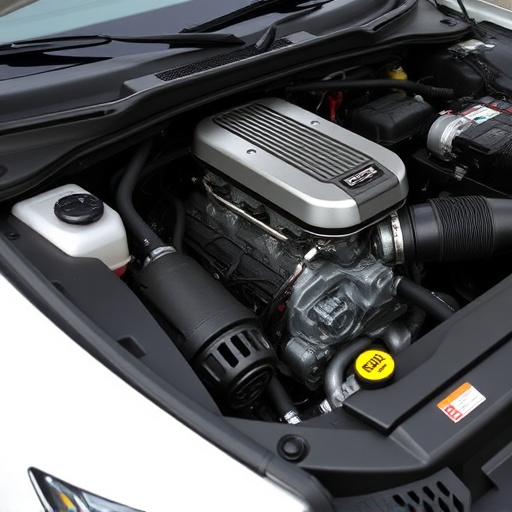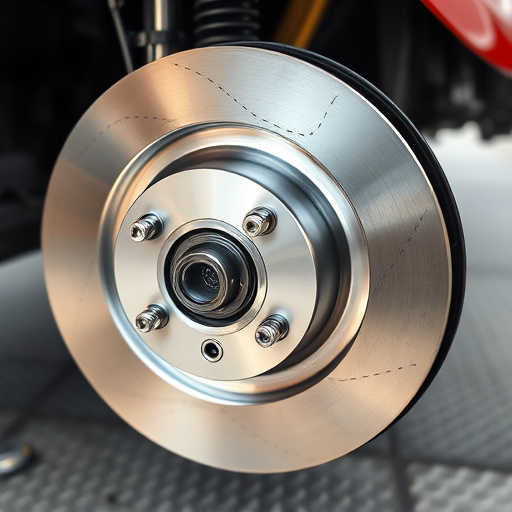Operating altitude impacts engine performance due to reduced oxygen availability, leading to power loss and lower fuel efficiency. Engine tuning systems adjust parameters like ignition timing, fuel injection, and compression ratios based on elevation and temperature. Custom modifications optimize airflow while uprating brakes ensures safe handling at high altitudes. Climate conditions also affect tuning, requiring adjustments to cooling systems, intake components, and exhaust systems. Adaptive engine tuning techniques dynamically adjust settings for optimal performance across varying elevations and climates, improving throttle response, engine life, and drivability.
In the realm of automotive engineering, achieving optimal engine performance across varying elevations and climates is a complex challenge. This article delves into the strategies behind engine tuning that adapt to these dynamic conditions. We explore how elevation affects engine breathability and compression, and how climate conditions like temperature and humidity influence fuel efficiency. By examining adaptive tuning techniques, we uncover methods for maximizing power and efficiency in diverse environments, ensuring optimal engine tuning regardless of geographical or meteorological factors.
- Understanding Elevation's Impact on Engine Performance
- Climate Conditions: How They Affect Engine Tuning
- Adaptive Tuning Techniques for Optimal Efficiency
Understanding Elevation's Impact on Engine Performance

The elevation at which a vehicle operates significantly influences its engine performance due to varying atmospheric pressure and oxygen levels. As altitude increases, air becomes thinner, reducing the amount of oxygen available for combustion. This can lead to power loss and decreased fuel efficiency. Engine tuning that accounts for these conditions is crucial to maintaining optimal performance.
Advanced engine tuning systems consider factors such as barometric pressure and temperature to adjust key parameters like ignition timing, fuel injection, and compression ratios. Customization through suspension kits or air intake systems designed for high-altitude driving can further enhance performance by improving airflow and gas exchange efficiency. Even uprating performance brakes becomes relevant in regions with steep climbs, ensuring the vehicle can handle the demands of elevated operations while maintaining control and safety.
Climate Conditions: How They Affect Engine Tuning

Climate conditions play a significant role in engine tuning, often requiring adjustments to optimize performance and efficiency. The air density at higher altitudes is lower, meaning there’s less oxygen available for combustion. This affects engine power and fuel injection systems, which need to be calibrated accordingly. In regions with extreme temperatures, whether hot deserts or freezing mountains, the engine’s cooling system must also be considered; modifications might be needed to ensure adequate warmth in cold climates or prevent overheating in hot ones.
Additionally, climate influences the performance of intake components and exhaust systems. At higher elevations, air filters may need to be upgraded for better airflow due to reduced oxygen density. Similarly, exhaust systems and tips can experience changes in backpressure, affecting engine breathing. Effective engine tuning accounts for these factors by fine-tuning fuel mixture ratios, ignition timing, and even using specific parts designed for different climates, ensuring optimal engine performance regardless of the external conditions.
Adaptive Tuning Techniques for Optimal Efficiency

In the realm of engine tuning, adaptive techniques play a pivotal role in enhancing performance across varying elevations and climates. These advanced methods ensure that your vehicle’s powerplant operates at peak efficiency, no matter if you’re cruising through high-altitude mountains or navigating urban jungles during scorching summer days. By dynamically adjusting settings based on external conditions, such as air density and temperature, adaptive tuning systems optimize fuel injection, ignition timing, and even compression ratios. This not only improves throttle response but also extends engine longevity by preventing excessive strain under harsh environmental factors.
Consider the impact of elevation; at higher altitudes, the thinner air reduces oxygen availability, affecting combustion efficiency. Adaptive tuning algorithms counteract this challenge by fine-tuning the exhaust systems and suspension components to ensure optimal air-fuel mixture delivery. Similarly, extreme climates demand tailored adjustments. During cold weather, for instance, advanced systems may modify spark plugs and timing to prevent premature ignition and improve fuel vaporization, enhancing overall performance and drivability. Incorporating high-performance parts is another strategic move, as these can be fine-tuned within the adaptive framework to deliver maximum power while maintaining reliability in diverse conditions.
Engine tuning that adapts to elevation and climate conditions is no longer a niche concern; it’s a game-changer in modern automotive engineering. By understanding how elevation affects performance and recognizing the impact of various climates, tuners can employ adaptive techniques to optimize efficiency. This ensures vehicles run smoothly and efficiently across diverse environments, delivering an enhanced driving experience while reducing fuel consumption and emissions. Engine tuning has evolved to meet the dynamic demands of today’s world, making it a vital aspect for both performance enthusiasts and everyday drivers alike.














